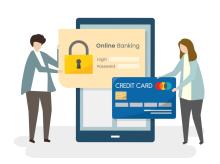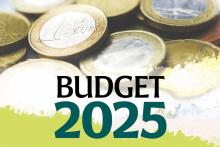What happens if you only pay the minimum on your credit card?

When you get your credit card bill every month, it shows the total amount you spent. But it also shows something called the "minimum payment" or "minimum due." This is the smallest amount you need to pay to avoid late fees or getting in trouble with the bank.
Usually, this is about 5% of your total bill, but it can be different depending on the bank.
How Do Banks Decide the Minimum Payment?
Banks follow a basic formula to figure out how much you need to pay as the minimum:
- 5% of your total credit card bill or ₹200, whichever is more
- Any unpaid amounts from the last month
- EMIs – if you’ve bought something on EMI, the monthly part is added
- Other charges like late fees, if any
Example: Neha from Pune has a credit card bill of ₹20,000. Her minimum due is 5% of that = ₹1,000. But if she also has an EMI of ₹2,500, her total minimum payment becomes ₹3,500.
Why Do Banks Allow You to Pay Just the Minimum?
It looks helpful when banks let you pay just a small amount. But they do it for a reason:
- They earn interest on the remaining money you haven’t paid.
- You keep using the card, so they make more money from your spending.
- Fewer people miss payments, so the bank avoids losses.
So, while it helps you for the short term, it can become costly in the long run.
What Happens If You Pay Only the Minimum?
A lot of people think paying just the minimum is enough. It’s not! Here’s why:
- You will pay a lot more in interest: When you don’t pay the full amount, the bank charges high interest on the remaining balance—this can be between 30% and 49% per year. Example: Amit owes ₹1,00,000. He pays only ₹5,000 (5%) this month. The ₹95,000 left will get charged with 36% interest. After a year, he could owe around ₹1,35,000—and he would’ve paid ₹40,000 just in interest!
- It will take you years to pay off the debt: Most of the money you pay as the minimum goes to cover interest, not the actual amount you spent. That means it takes a really long time to pay it all off. Example: Priya owes ₹50,000. She pays ₹2,500 every month. With a 42% interest rate, it could take her 5–6 years to finish paying—even if she stops using the card!
- Your Credit Score Could Go Down: Your credit utilization ratio (CUR) means how much of your total card limit you’re using. If this is more than 30%, your credit score could go down. Example: Rakesh has a card limit of ₹1,20,000 and has used ₹90,000. That’s 75% usage—too high! If he only pays the minimum, his balance stays high and his credit score may fall.
- You Can Get Trapped in Debt: Paying only the minimum might feel easy, but interest keeps adding up. You could end up paying double or even triple the original amount. Example: Sunita spent ₹75,000 on her vacation using her credit card. She paid only ₹3,750/month. After 2 years, she had already paid ₹90,000, but she still owed a big amount!
Should You Pay Just the Minimum Amount on Your Credit Card Bill?
When you get your credit card bill, you usually have two choices: pay the full amount or pay a small part called the “minimum amount due.” If you're low on cash, it might be tempting to pay just the minimum. But doing this often can lead to a bigger problem — your credit card debt can quickly grow out of control.
The “minimum amount due” is usually 5% of your total bill. If you’ve converted a payment into EMIs (monthly installments), that EMI amount is added to your minimum due. Also, any unpaid balance from last month will be included in this amount too.
Some people choose to pay only the minimum because it keeps their credit card active, so they can continue using it (except for the EMI portion). It also prevents their payment from being marked as missed, which helps protect their credit score. Plus, they can avoid late payment charges.
But there are some serious downsides. The unpaid part of the bill is carried over, and the bank charges interest on that amount. If you keep delaying full payment, the minimum amount gets bigger each month. Credit card interest rates are high — usually between 35% to 40% per year — and interest is calculated daily on the unpaid amount. Worse, interest starts from the day you buy something, not from the end of the billing cycle. That means you lose the benefit of interest-free days. Also, your available credit limit goes down by the amount you haven’t paid, which can limit how much you can spend.
Why Paying Only the Minimum on Your Credit Card Can Be Risky
Credit cards make spending easier and give you flexibility with your money. But they also come with an important responsibility — paying your dues on time.
Each month, your credit card bill shows two things:
- Total amount due – this is the full amount you owe
- Minimum due – this is the smallest amount you must pay to avoid late fees
In India, many people – especially salaried workers and small business owners – choose to pay just the minimum amount. They believe this helps them stay out of trouble while managing their monthly budget. But this decision can backfire badly in the long run.
Real-Life Example
Let’s say Rohit, a software engineer in Bangalore, has a credit card bill of ₹50,000. His bank charges 42% interest per year. The minimum payment required is ₹2,500 (5% of the total). If Rohit pays only this amount each month, he’s not touching the main balance much – and interest keeps adding up.
After one year, without buying anything else, his ₹50,000 debt grows to around ₹71,000. That’s a 42% jump!
So What Should You Do?
- Always try to pay the full amount on your credit card if possible.
- If you’re short on cash, paying just the minimum once or twice is okay – like in an emergency.
- But don’t make it a habit. Over time, it can cost you much more and bring financial stress.
Conclusion: Try to Pay More Than the Minimum
Paying just the minimum amount on your credit card can help you avoid late fees and keep your card active. But it’s not a good long-term habit. It can lead to more debt and high interest. It’s better to pay the full bill every month if you can. If that’s not possible, try to pay more than the minimum due. Also, keep an eye on how much you spend and how much of your credit limit you are using. This will help you stay in control of your money and protect your credit score.
Paying only the minimum might seem easy now, but it can become very expensive later on.




Leave a Reply